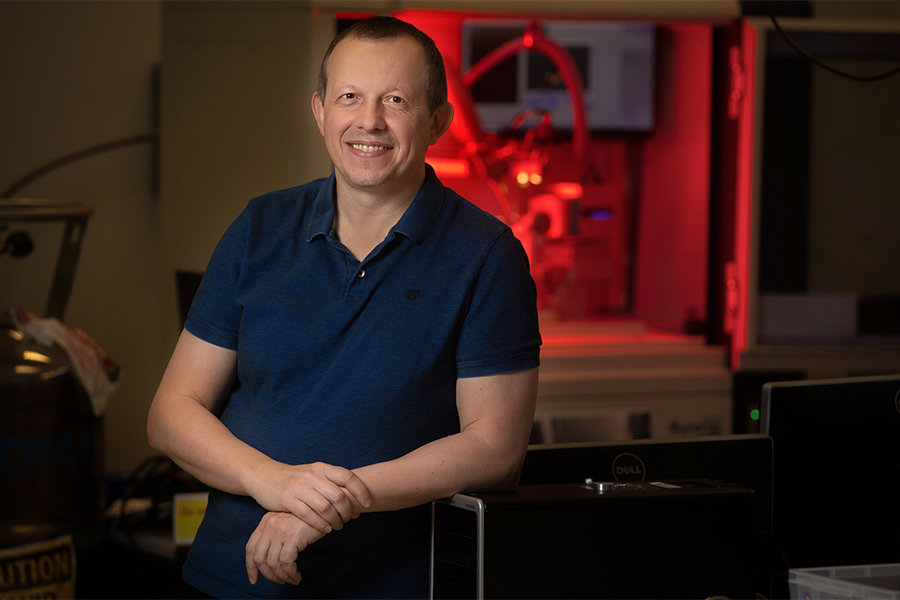
Air conditioners, refrigerators and other machines that heat and cool work with a simple premise. Pressure is applied to a gaseous refrigerant to turn it into a liquid state and then removed again so cold air is released. That cycle repeats.
But it isn’t the most efficient or environmentally friendly process. And now, researchers from Florida State University and University of Barcelona have developed a process with magnets that could potentially create a better, faster, non-volatile cooling system.
“There’s been a lot of interest in moving this process to a solid-based system to avoid the use of greenhouse gases,” said FSU Professor of Chemistry Michael Shatruk. “We realized we could also do this with molecular crystals.”
The findings are published in the journal Advanced Materials.
Shatruk and his colleagues found that applying pressure to iron-based molecules arranged in a crystalline lattice could produce a large cooling effect. The pressure causes a transition to a denser state in the crystalline lattice, and when the pressure is released, the lattice expands, creating the cooling effect similar to the one produced by expanding gas.
The results of this process have outperformed other solid-state barocaloric materials that scientists across the globe have been trying to perfect to mimic traditional gas refrigeration processes.
Shatruk has not traditionally examined barocaloric technologies, but he realized that his knowledge of magnetocaloric technologies and phase transitions in molecular materials positioned his lab to conduct research on this topic.
“We realized we had broad knowledge of this area and we could come up with an optimal compound to produce the desired effect,” he said.
Shatruk said he and his colleagues are now working to better understand why the iron-based molecule they chose to work with performed so well and to see if they can tweak the process to heighten future performance.
Shatruk collaborated on this work with researchers from University of Barcelona, Ankara University in Turkey, University of Science and Technology of Beijing in China, as well as students and faculty from Florida State University and the FSU-headquartered National High Magnetic Field Laboratory. Florida State University and University of Barcelona have filed a joint patent on their technology.
This research is funded by the National Science Foundation.




